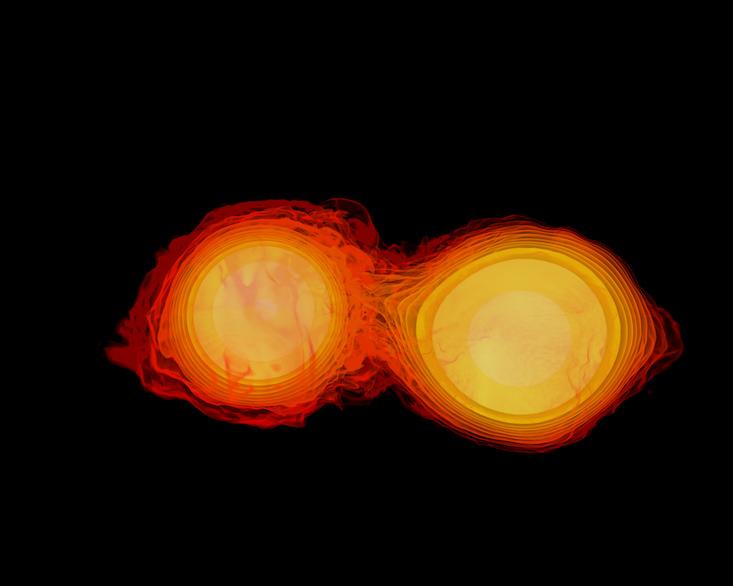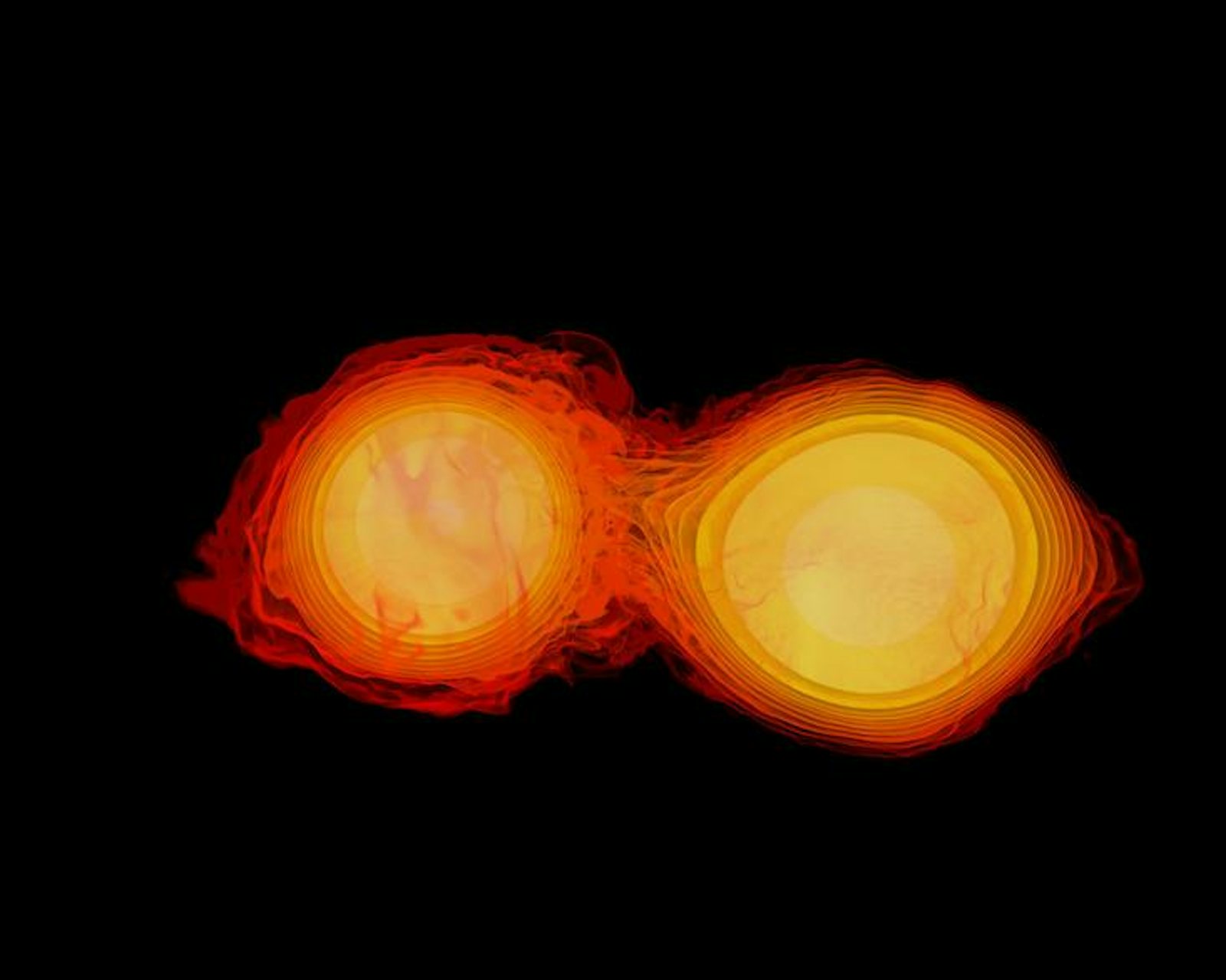
This month, before LIGO, the Laser Interferometer Gravitational Wave Observatory, and its European counterpart Virgo, were going to close down for a year to undergo upgrades, they jointly surveyed the skies. It was a small observational window—the 1st to the 25th—but that may have been enough: A rumor that LIGO has detected another gravitational wave—the fourth in two years—is making the rounds. But this time, there’s a twist: The signal might have been caused by the merger of two neutron stars instead of black holes.
If the rumor holds true, it would be an astonishingly lucky detection. To get a sense of the moment, Nautilus spoke to David Radice, a postdoctoral researcher at Princeton who simulates neutron star mergers, “one of LIGO’s main targets,” he says.
This potential binary neutron star merger sighting reminds me of when biologists think they’ve discovered a new species. How would you describe it?
I do agree that this is the first time something like this has been seen.
For me, a nice analogy is one of particle colliders. In a sense, neutron star mergers are the largest hadron colliders ever conceived. Instead of smashing a few nucleons, it’s like smashing 1060 of them. So by looking at the aftermath, we can learn a lot about fundamental physics. There is a lot that can happen when these stars collide and I don’t think we have a full knowledge of all the possibilities. I think we’ll learn a lot and see new things.
What it would it mean if they were detecting a neutron star binary merger?
I expected this neutron star merger to be detected further in the future—the possibility that this merger has been detected earlier suggests that that rate of these events is higher than we thought. There is maybe also a counterpart—an electromagnetic wave. There are many things that you can only really do with an electromagnetic counterpart. For example, even when we have, in the far future, five detectors worldwide, we will not be able to pinpoint the exact location to the source with the precision to say: “OK, this is the host galaxy.”
Well, if you have an electromagnetic counterpart, especially in the optical region, you can really pinpoint a galaxy and say, “This merger happened in this galaxy that has these properties.”
What makes a neutron star binary merger different from a black hole binary merger?
One of the main things is that in a black hole binary merger, you’re just looking at the space-time effects. In this case we are looking at this extremely dense matter. There are a lot of things that you can hope to learn about neutron star mergers. We’re looking at them for a source of gamma ray bursts, or as the origin of heavy elements, or as a way to learn about physics of very high density matter.
One idea that has been around now for a few years is that many of the heavy elements—elements, for example, like platinum or gold—may actually be produced in neutron star mergers. Material is ejected, and because of nuclear processes, it will produce these heavy elements that are otherwise difficult to produce in normal stars.
You’ve created visual simulations of neutron star mergers, like the one below. How much power is required to run them?
It’s publicly available—anyone can download the code and do simulations similar to those…but you need to run them on a supercomputer. It typically takes weeks on thousands of processors, but it can tell you a lot about these mergers. Now the two detectors both LIGO and Virgo are expected to shut down and go through a series of upgrades. When they come back online, their sensitivity will be significantly boosted so we can see much farther out and learn more about each event.
Dan Garisto is an editorial intern at Nautilus.


























